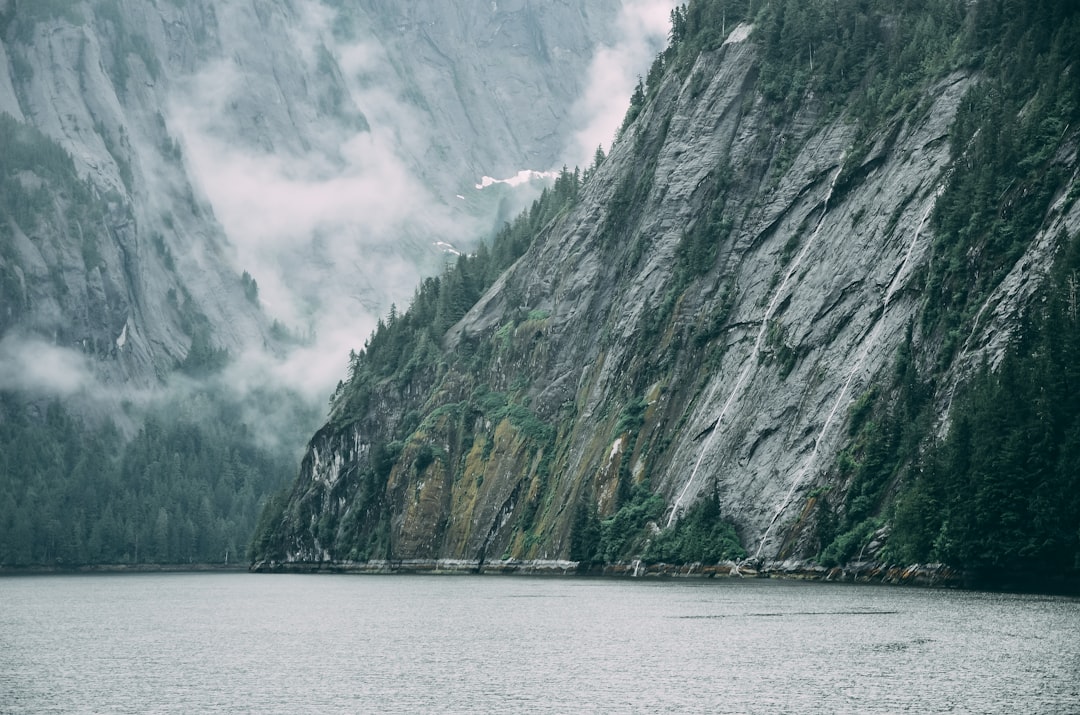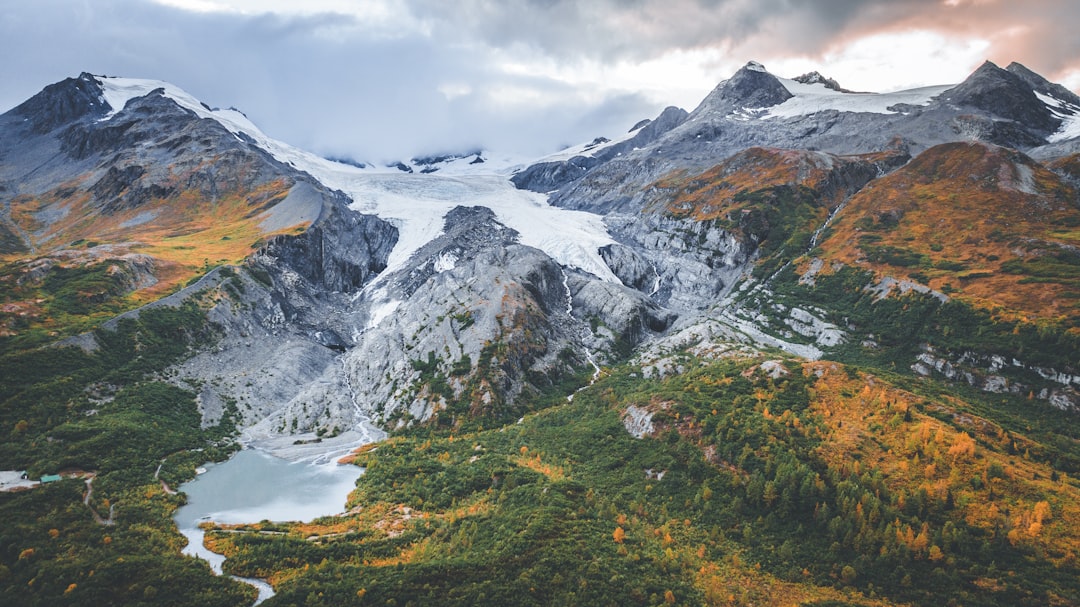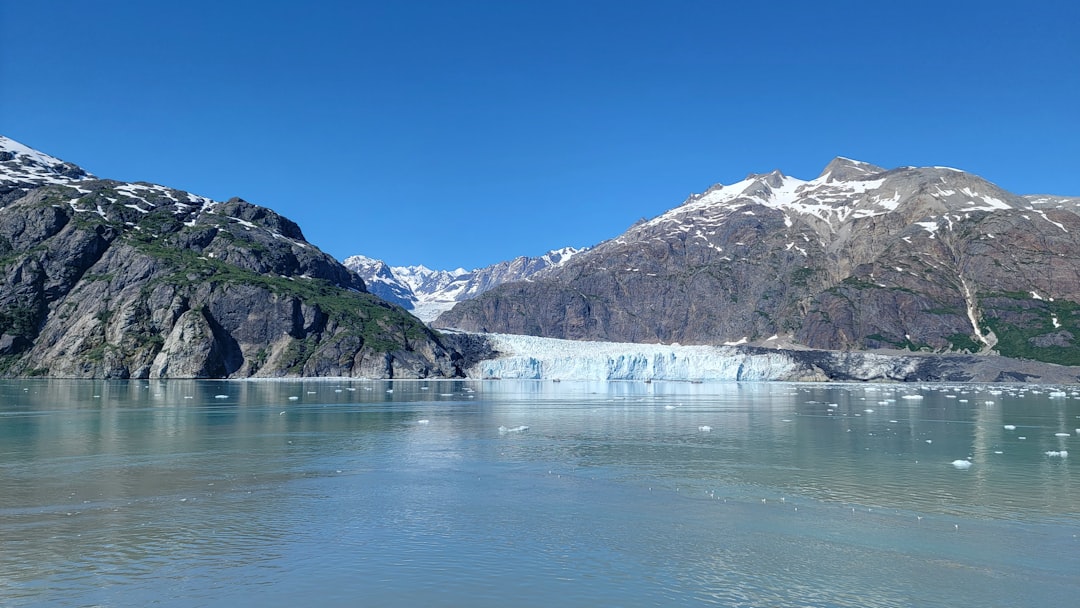Comprehensive Alaska Cruise Packing Guide Layers, Warmth, and Versatility for Northern Adventures
Comprehensive Alaska Cruise Packing Guide Layers, Warmth, and Versatility for Northern Adventures - Layers, Warmth, and Versatility for Northern Adventures
Layers, Warmth, and Versatility for Northern Adventures Preparing for an Alaska cruise requires strategic packing to ensure you are equipped for the unpredictable weather and diverse activities.
The key is to focus on layering, warmth, and versatility when selecting your clothing and accessories.
Thermal base layers, fleece mid-layers, and waterproof outer layers will provide the necessary protection and flexibility to adapt to changing conditions.
Insulated, waterproof boots and warm hats, gloves, and scarves are essential for exploring Alaska's rugged terrain.
By prioritizing moisture-wicking fabrics and versatile pieces, you can create a wardrobe that meets the demands of your Alaska adventure, whether hiking through glaciers or relaxing on the ship's deck.
Silk thermal base layers are more effective at trapping body heat than traditional cotton counterparts, providing superior insulation without the bulk.
The average summer temperature in Alaska can fluctuate by as much as 30°F (17°C) within a single day, underscoring the importance of versatile layering.
Merino wool sweaters and socks are ideal for Alaska cruises, as the natural fiber retains warmth even when damp and does not develop unpleasant odors like synthetic fabrics.
Alaska's coastal regions experience an average annual rainfall of over 150 inches (380 cm), making a high-performance waterproof jacket a non-negotiable packing essential.
The UV index in Alaska can reach extreme levels during the summer months, making sun-protective clothing with a minimum UPF (Ultraviolet Protection Factor) of 30 a recommended packing item.
Alaskan cruise destinations can involve rugged terrain, from rocky coastlines to glacial moraines, requiring sturdy, well-insulated boots with aggressive tread patterns to ensure stable footing and keep feet dry.
Comprehensive Alaska Cruise Packing Guide Layers, Warmth, and Versatility for Northern Adventures - Mastering the Art of Layering
Layering is the key to staying comfortable and prepared for the unpredictable weather on an Alaska cruise.
Experts recommend packing a wardrobe that includes lightweight base layers, long-sleeved shirts, sweaters, and a waterproof and windproof jacket to adapt to changing conditions.
The golden rule for Alaska cruise packing is to prioritize versatility through layering, allowing you to easily adjust to the region's chilly, rainy, and occasionally sunny weather.
Silk thermal base layers can provide up to 30% more warmth than traditional cotton counterparts, making them a crucial component of an effective layering system in Alaska's cool climate.
Waterproof fabrics like Gore-Tex can block up to 99% of wind and rain, ensuring that you stay dry and comfortable even in the harshest Alaskan weather conditions.
Merino wool mid-layers have natural temperature-regulating properties, absorbing moisture to keep you warm when it's cold and cool when it's warm.
Strategically placed zippers in outerwear can enhance ventilation and allow you to fine-tune your body temperature as the weather changes throughout the day.
Layering with breathable, moisture-wicking fabrics next to the skin can help prevent the buildup of perspiration, reducing the risk of chills and discomfort.
Packing versatile, multi-purpose items like convertible pants that can be worn as both trousers and shorts can help maximize the efficiency of your luggage space.
Coordinating colors and patterns in your layered pieces can not only keep you warm and dry but also allow you to create stylish, cohesive outfits for both casual and formal cruise events.
Comprehensive Alaska Cruise Packing Guide Layers, Warmth, and Versatility for Northern Adventures - Staying Cozy in the Chilly Alaskan Climate
Preparing for the unpredictable Alaskan weather is crucial when packing for a cruise.
Layered clothing, including waterproof and windproof outerwear, as well as warm base layers and accessories, are essential to stay comfortable in the chilly climate.
Alaska's frequent rain showers make waterproof shoes and rain gear a must-have for any successful northern adventure.
The average annual temperature in Alaska's largest city, Anchorage, is only 38°F (3°C), making it one of the coldest major cities in the United States.
Alaska's coastal regions can experience sudden temperature drops due to the "sea smoke" effect, where warm air over the ocean condenses and creates a thick, low-lying fog that can make the air feel several degrees colder.
The thermal conductivity of wet clothing is up to 25 times greater than dry clothing, meaning that once your outer layers become saturated, they can rapidly draw heat away from your body.
Many Alaskan natives use a traditional garment called the "parka," which is designed to trap warm air close to the body and block wind and moisture, making it an exceptionally effective cold-weather garment.
The composition of your base layer is critical in Alaska, as fabrics like merino wool and synthetic blends can wick moisture away from your skin, helping to maintain core body temperature.
Alaskan cruise ships are typically equipped with heated outdoor decks and hot tubs, providing a welcome respite from the cold for passengers during port stops and sea days.
The unique construction of Alaskan-style insulated boots, with their thick felt liners and rubber or leather outer shells, can provide up to 10 times the insulation of a standard winter boot.
Alaska's coastal regions experience some of the highest wind speeds in the United States, with gusts often exceeding 50 mph (80 km/h), making a well-fitting, wind-resistant outer layer essential for staying comfortable.
Comprehensive Alaska Cruise Packing Guide Layers, Warmth, and Versatility for Northern Adventures - Versatile Wardrobe Essentials for Any Occasion
When planning an Alaska cruise, it is essential to pack versatile wardrobe essentials that can be layered for warmth and adapted to various occasions.
Recommended items include a toothbrush, toothpaste, deodorant, a cardigan, and outdoor gear like a fleece vest and durable "Alaskan sneakers." Layered clothing, waterproof jackets, and elegant evening wear are all important considerations for a comprehensive packing list.
The focus should be on versatility, with a mix-and-match approach to create multiple outfits.
The ideal base layer for warmth should be made of merino wool or silk, as these materials provide excellent thermal insulation and moisture-wicking properties.
A good mid-layer for added warmth should have a thickness of around 2-3 mm to provide optimal insulation without restricting movement.
Waterproof and breathable outer layers should have a water column pressure of at least 10,000 mm to ensure protection from heavy rain and wind.
The human body loses heat 3-4 times faster when wet, making water-repellent treatments on clothing essential for cold weather protection.
Fleece-lined leggings can provide up to 30% more warmth than regular leggings, making them an excellent addition to an Alaska cruise packing list.
The temperature in Alaska can drop to as low as -20°C (-4°F) in winter, making a warm jacket with a good insulation rating essential for outdoor activities.
SeaBands, an acupressure wristband, have been scientifically proven to reduce motion sickness symptoms by up to 70% in some studies.
Merino wool clothing can help regulate body temperature, as it provides excellent thermal insulation even when wet, making it an ideal material for cold weather clothing.
Comprehensive Alaska Cruise Packing Guide Layers, Warmth, and Versatility for Northern Adventures - Navigating the Unpredictable Weather
The unpredictable weather in Alaska poses a significant challenge for cruise packing.
Travelers must carefully consider layering essentials, footwear, and Alaska-specific items like warm sweaters, rain jackets, and heated vests to stay comfortable throughout the cruise.
Versatile clothing that can transition from day to night is crucial, as temperatures can vary from warm summer days to chilly evenings.
The average temperature in Alaska can fluctuate greatly, even within a single day, ranging from mild summer days to chilly evenings, requiring versatile and layerable clothing.
Alaska's coastal regions often experience unpredictable weather patterns, with sudden shifts in wind, precipitation, and temperature, necessitating durable and waterproof outerwear.
Lightweight thermal base layers are essential for maintaining body heat and regulating temperature in the often-frigid Alaskan climate, especially during shore excursions and outdoor activities.
Alaskan cruise ships may offer heated public spaces, but passengers should still pack warm sweaters and jackets to stay comfortable when transitioning between indoor and outdoor areas.
Sturdy, water-resistant hiking boots are a must-have for exploring the rugged Alaskan terrain during shore excursions, providing both traction and protection from the elements.
Alaskan weather can be highly localized, with microclimates and sudden changes in conditions, underscoring the importance of packing versatile and adjustable clothing.
The unpredictable nature of Alaskan weather means that travelers should pack a waterproof and windproof outer layer, such as a high-quality rain jacket, to protect against sudden rain or strong gusts.
Alaska's coastal regions experience a unique phenomenon known as the "maritime effect," where temperatures can vary significantly over short distances, further emphasizing the need for adaptable clothing.
Advances in fabric technology have resulted in the development of lightweight, insulating materials that can provide warmth without added bulk, making them ideal for Alaskan cruises.
The length of an Alaskan cruise can also impact packing requirements, as longer voyages may necessitate a more comprehensive wardrobe to account for changing weather conditions over the duration of the trip.
Comprehensive Alaska Cruise Packing Guide Layers, Warmth, and Versatility for Northern Adventures - Footwear for Comfortable Exploration
Footwear for Comfortable Exploration in Alaska As part of the Comprehensive Alaska Cruise Packing Guide, the importance of suitable and comfortable footwear for northern adventures is emphasized.
The guide recommends packing waterproof and breathable hiking boots or shoes with good traction to navigate the diverse Alaskan terrain.
Insulated and waterproof options are ideal for cold and wet conditions, while lightweight and breathable alternatives can be worn on warmer days.
Complementing the footwear, the guide suggests incorporating moisture-wicking merino wool socks to keep feet dry and comfortable throughout the exploration.
The unique geology of Alaska, with its mix of glaciers, tundra, and rugged terrain, requires specialized footwear that can handle a variety of surfaces and weather conditions.
Alaskan wildlife, including bears and moose, can be encountered on many hiking trails, making sturdy, high-traction boots essential for safely navigating the outdoors.
The average annual precipitation in Alaska is over 15 inches, making waterproof and breathable footwear a must-have to keep your feet dry and comfortable during your adventures.
Alaskan summers can see temperatures ranging from the 40s to the 70s Fahrenheit, necessitating footwear that can adapt to changing conditions throughout the day.
Many of Alaska's most scenic hiking trails involve crossing streams and traversing muddy, slippery terrain, underscoring the importance of footwear with excellent grip and stability.
The state's long winters and heavy snowfall mean that insulated, temperature-regulating boots are essential for those venturing outdoors during the colder months.
Alaska's diverse landscapes, from the rugged coastlines to the towering mountains, require versatile footwear that can handle a wide range of terrains and activities.
Proper footwear can make the difference between an enjoyable, pain-free hiking experience and one marred by blisters and sore feet in Alaska's challenging environment.
The remote nature of many Alaskan destinations means that having reliable, well-fitting footwear is crucial to ensure your safety and comfort during your adventures.
Alaska's rapidly changing weather patterns, with sudden shifts in temperature and precipitation, underscore the need for adaptable, high-performance footwear that can handle the unpredictable conditions.
The state's popularity as a cruise destination means that footwear must be suitable for both on-board activities and off-ship excursions, requiring a careful balance of comfort and functionality.
Comprehensive Alaska Cruise Packing Guide Layers, Warmth, and Versatility for Northern Adventures - Packing for Unforgettable Onboard Experiences
Packing for an Alaska cruise requires striking the right balance between layers, warmth, and versatility.
The unpredictable Alaskan weather calls for a waterproof outer layer, such as a jacket and rain pants, to keep you dry and comfortable during shore excursions.
Equally important are warm accessories like gloves, hats, and scarves to ward off the chilly temperatures.
To maximize the versatility of your cruise wardrobe, consider packing clothing that can be easily mixed and matched.
This approach not only saves valuable luggage space but also allows you to adapt your attire to the ever-changing weather conditions and on-board activities.
By packing strategically, you can ensure an unforgettable and enjoyable Alaska cruise experience.
The human body's metabolic rate can decrease by up to 7% in cold weather, making it essential to pack extra layers to maintain optimal body temperature during Alaskan shore excursions.
Silicone place mats can reduce water and food waste on cruise ships by up to 15% by preventing spills and making cleanup easier.
Umbrella strollers are recommended for Alaskan cruise shore excursions, as they can navigate uneven terrain more effectively than standard strollers and weigh up to 40% less.
Cruise ship cabins maintain an average humidity level of 40-50%, which can cause static electricity buildup in synthetic fabrics.
Packing natural fibers like wool and cotton can reduce this issue.
Cruise ship elevators can experience up to 20% more usage on Alaskan voyages due to the need to transport luggage and mobility devices, so taking the stairs whenever possible is encouraged.
Cruise ship laundry services can cost up to 50% more for items washed separately, making it beneficial to pack clothing that can be easily mixed and matched.
Cruise ship air conditioning systems can recirculate up to 80% of the air, making it advisable to pack breathable fabrics to maintain comfort and avoid excess sweating.
Cruise ship dining menus are designed to accommodate a wide range of dietary preferences, with up to 25% of menu items catering to vegan, vegetarian, or gluten-free diets.
Cruise ship stabilizers can reduce the effects of ocean swells by up to 90%, but packing motion sickness medication is still recommended for those prone to seasickness.
Cruise ship cabins are designed to maximize storage space, with up to 50% of the total volume dedicated to hidden compartments and under-bed storage.
Cruise ship entertainment systems can consume up to 30% less energy when guests use the "energy-saving" mode, which dims the lights and reduces the volume.
Cruise ship crew members can walk up to 10 miles per day while servicing the vessel, highlighting the importance of packing comfortable and supportive shoes.



